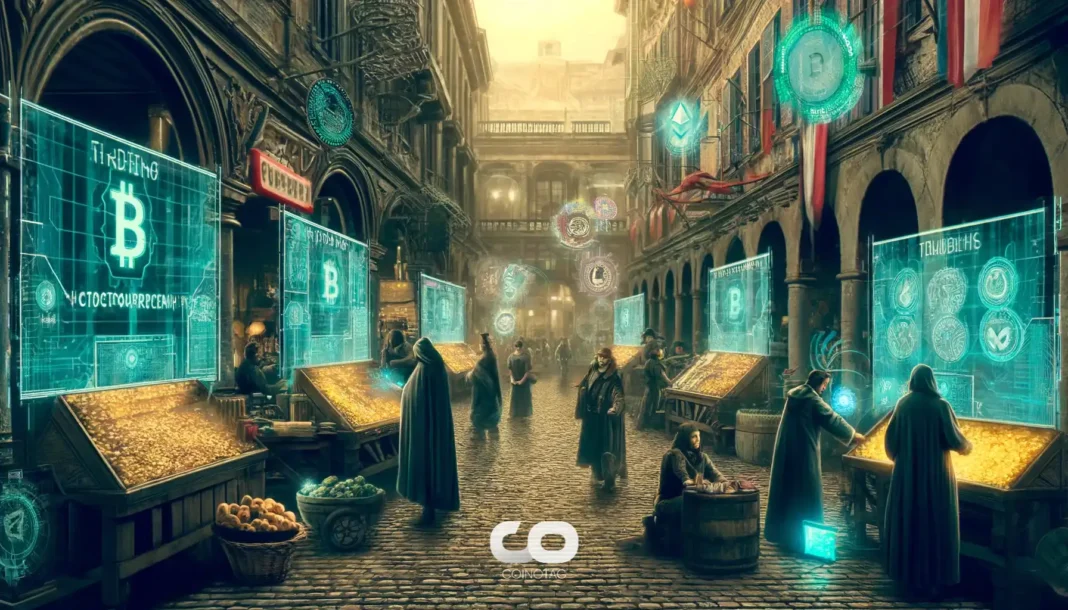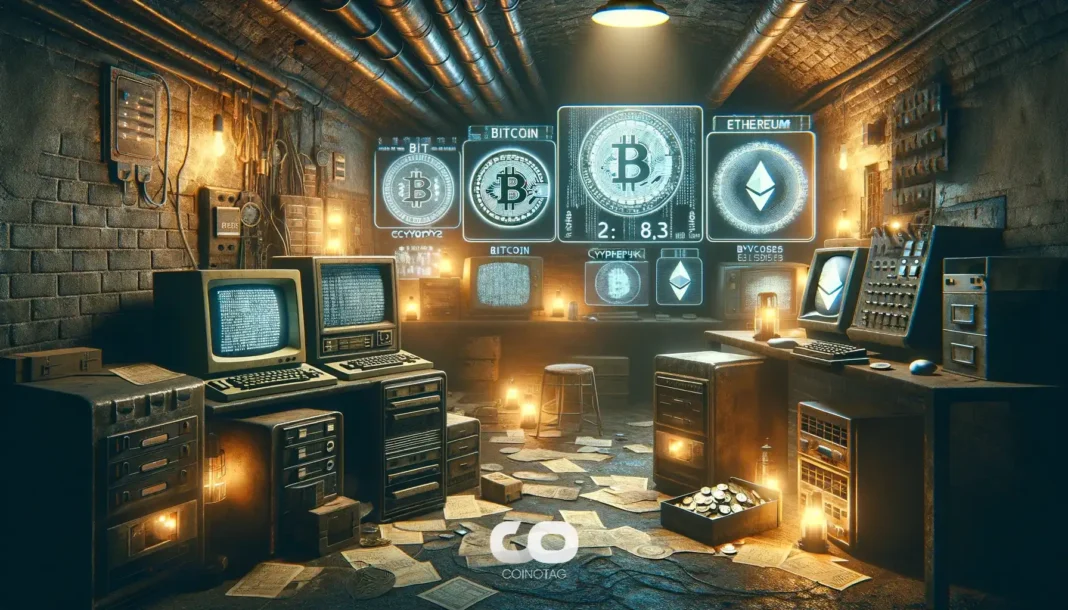| COINOTAG recommends • Exchange signup |
| 💹 Trade with pro tools |
| Fast execution, robust charts, clean risk controls. |
| 👉 Open account → |
| COINOTAG recommends • Exchange signup |
| 🚀 Smooth orders, clear control |
| Advanced order types and market depth in one view. |
| 👉 Create account → |
| COINOTAG recommends • Exchange signup |
| 📈 Clarity in volatile markets |
| Plan entries & exits, manage positions with discipline. |
| 👉 Sign up → |
| COINOTAG recommends • Exchange signup |
| ⚡ Speed, depth, reliability |
| Execute confidently when timing matters. |
| 👉 Open account → |
| COINOTAG recommends • Exchange signup |
| 🧭 A focused workflow for traders |
| Alerts, watchlists, and a repeatable process. |
| 👉 Get started → |
| COINOTAG recommends • Exchange signup |
| ✅ Data‑driven decisions |
| Focus on process—not noise. |
| 👉 Sign up → |
TRON Futures Netflow surged 170% to $7.48M, signaling dominant buyer activity and growing Futures demand for TRX. Combined with a $23B USDT supply on TRON, these flows point to strengthening network demand and a higher probability of TRX testing resistance near $0.37 if buying pressure persists.
-
170% Futures Netflow surge to $7.48M shows strong buyer dominance
-
Spot markets show seller pressure despite netflow briefly flipping positive
-
USDT supply on TRON at $23B signals increasing on‑chain demand and activity
TRON Futures Netflow surge: TRX buyers dominate futures, USDT supply spikes to $23B — monitor spot pressure and $0.37 resistance for next move. Read on for data and takeaways.
What is TRON Futures Netflow and why does the 170% surge matter?
TRON Futures Netflow measures capital moving into futures contracts for TRX and reflects directional trader demand. A 170% surge to $7.48M indicates concentrated buyer activity in derivatives, increasing upside pressure on TRX if spot liquidity holds and Futures funding remains supportive.
| COINOTAG recommends • Professional traders group |
| 💎 Join a professional trading community |
| Work with senior traders, research‑backed setups, and risk‑first frameworks. |
| 👉 Join the group → |
| COINOTAG recommends • Professional traders group |
| 📊 Transparent performance, real process |
| Spot strategies with documented months of triple‑digit runs during strong trends; futures plans use defined R:R and sizing. |
| 👉 Get access → |
| COINOTAG recommends • Professional traders group |
| 🧭 Research → Plan → Execute |
| Daily levels, watchlists, and post‑trade reviews to build consistency. |
| 👉 Join now → |
| COINOTAG recommends • Professional traders group |
| 🛡️ Risk comes first |
| Sizing methods, invalidation rules, and R‑multiples baked into every plan. |
| 👉 Start today → |
| COINOTAG recommends • Professional traders group |
| 🧠 Learn the “why” behind each trade |
| Live breakdowns, playbooks, and framework‑first education. |
| 👉 Join the group → |
| COINOTAG recommends • Professional traders group |
| 🚀 Insider • APEX • INNER CIRCLE |
| Choose the depth you need—tools, coaching, and member rooms. |
| 👉 Explore tiers → |
How has futures vs spot behavior diverged recently?
Futures show clear buyer dominance: Taker CVD (90D) turned green for three consecutive days, mirroring past runs that preceded price gains. In contrast, Spot Taker CVD (90) has been negative over 30 days, indicating sellers have been more aggressive on the spot order book.
| COINOTAG recommends • Exchange signup |
| 📈 Clear interface, precise orders |
| Sharp entries & exits with actionable alerts. |
| 👉 Create free account → |
| COINOTAG recommends • Exchange signup |
| 🧠 Smarter tools. Better decisions. |
| Depth analytics and risk features in one view. |
| 👉 Sign up → |
| COINOTAG recommends • Exchange signup |
| 🎯 Take control of entries & exits |
| Set alerts, define stops, execute consistently. |
| 👉 Open account → |
| COINOTAG recommends • Exchange signup |
| 🛠️ From idea to execution |
| Turn setups into plans with practical order types. |
| 👉 Join now → |
| COINOTAG recommends • Exchange signup |
| 📋 Trade your plan |
| Watchlists and routing that support focus. |
| 👉 Get started → |
| COINOTAG recommends • Exchange signup |
| 📊 Precision without the noise |
| Data‑first workflows for active traders. |
| 👉 Sign up → |
| COINOTAG recommends • Traders club |
| ⚡ Futures with discipline |
| Defined R:R, pre‑set invalidation, execution checklists. |
| 👉 Join the club → |
| COINOTAG recommends • Traders club |
| 🎯 Spot strategies that compound |
| Momentum & accumulation frameworks managed with clear risk. |
| 👉 Get access → |
| COINOTAG recommends • Traders club |
| 🏛️ APEX tier for serious traders |
| Deep dives, analyst Q&A, and accountability sprints. |
| 👉 Explore APEX → |
| COINOTAG recommends • Traders club |
| 📈 Real‑time market structure |
| Key levels, liquidity zones, and actionable context. |
| 👉 Join now → |
| COINOTAG recommends • Traders club |
| 🔔 Smart alerts, not noise |
| Context‑rich notifications tied to plans and risk—never hype. |
| 👉 Get access → |
| COINOTAG recommends • Traders club |
| 🤝 Peer review & coaching |
| Hands‑on feedback that sharpens execution and risk control. |
| 👉 Join the club → |
Buyers take over TRON’s Futures market — what data supports this?
CryptoQuant analyst Burak Kesmeci observed TRON’s Taker CVD (90D) entering green territory for three straight days — only the second occurrence in 2025. Historically, similar green stretches aligned with upward price moves.
CoinGlass data shows Futures inflow outpaced outflows, with inflows around $75.38M versus $67.91M in outflows during the same window. This net positive flow coincides with the Futures Netflow jumping 170% to $7.48M.
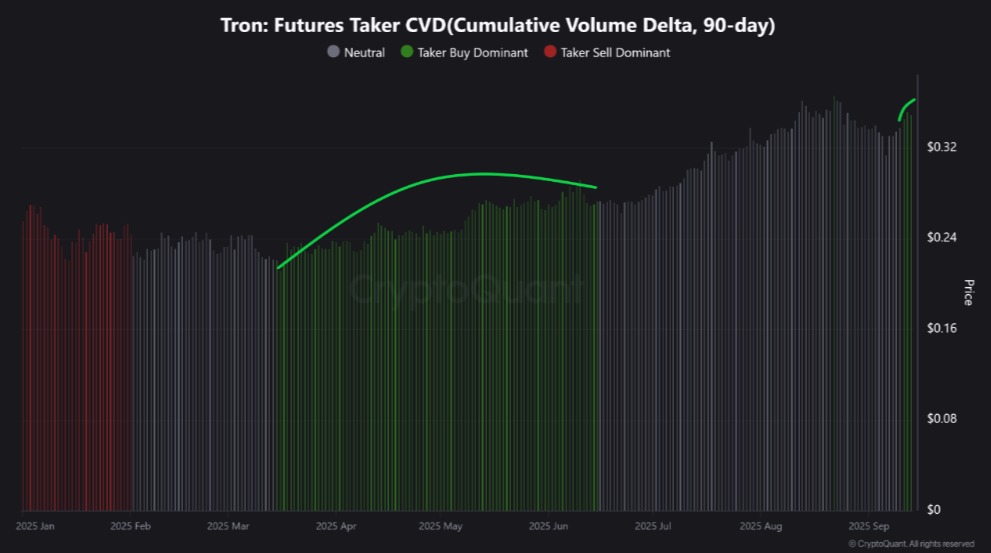
Source: CryptoQuant (data provider)
| COINOTAG recommends • Exchange signup |
| 📈 Clear control for futures |
| Sizing, stops, and scenario planning tools. |
| 👉 Open futures account → |
| COINOTAG recommends • Exchange signup |
| 🧩 Structure your futures trades |
| Define entries & exits with advanced orders. |
| 👉 Sign up → |
| COINOTAG recommends • Exchange signup |
| 🛡️ Control volatility |
| Automate alerts and manage positions with discipline. |
| 👉 Get started → |
| COINOTAG recommends • Exchange signup |
| ⚙️ Execution you can rely on |
| Fast routing and meaningful depth insights. |
| 👉 Create account → |
| COINOTAG recommends • Exchange signup |
| 📒 Plan. Execute. Review. |
| Frameworks for consistent decision‑making. |
| 👉 Join now → |
| COINOTAG recommends • Exchange signup |
| 🧩 Choose clarity over complexity |
| Actionable, pro‑grade tools—no fluff. |
| 👉 Open account → |
How is the spot market behaving and why does that matter?
Spot markets have seen more aggressive selling: Spot Taker CVD (90) remained negative over the past 30 days, indicating sellers hit bids more often than buyers lifted asks.
Despite recent flips, TRON’s Spot Netflow only recently turned positive after two days of negative readings. CoinGlass reports spot inflows of $52.24M versus $51.19M in outflows, producing a netflow near $1.05M.
| COINOTAG recommends • Members‑only research |
| 📌 Curated setups, clearly explained |
| Entry, invalidation, targets, and R:R defined before execution. |
| 👉 Get access → |
| COINOTAG recommends • Members‑only research |
| 🧠 Data‑led decision making |
| Technical + flow + context synthesized into actionable plans. |
| 👉 Join now → |
| COINOTAG recommends • Members‑only research |
| 🧱 Consistency over hype |
| Repeatable rules, realistic expectations, and a calmer mindset. |
| 👉 Get access → |
| COINOTAG recommends • Members‑only research |
| 🕒 Patience is an edge |
| Wait for confirmation and manage risk with checklists. |
| 👉 Join now → |
| COINOTAG recommends • Members‑only research |
| 💼 Professional mentorship |
| Guidance from seasoned traders and structured feedback loops. |
| 👉 Get access → |
| COINOTAG recommends • Members‑only research |
| 🧮 Track • Review • Improve |
| Documented PnL tracking and post‑mortems to accelerate learning. |
| 👉 Join now → |
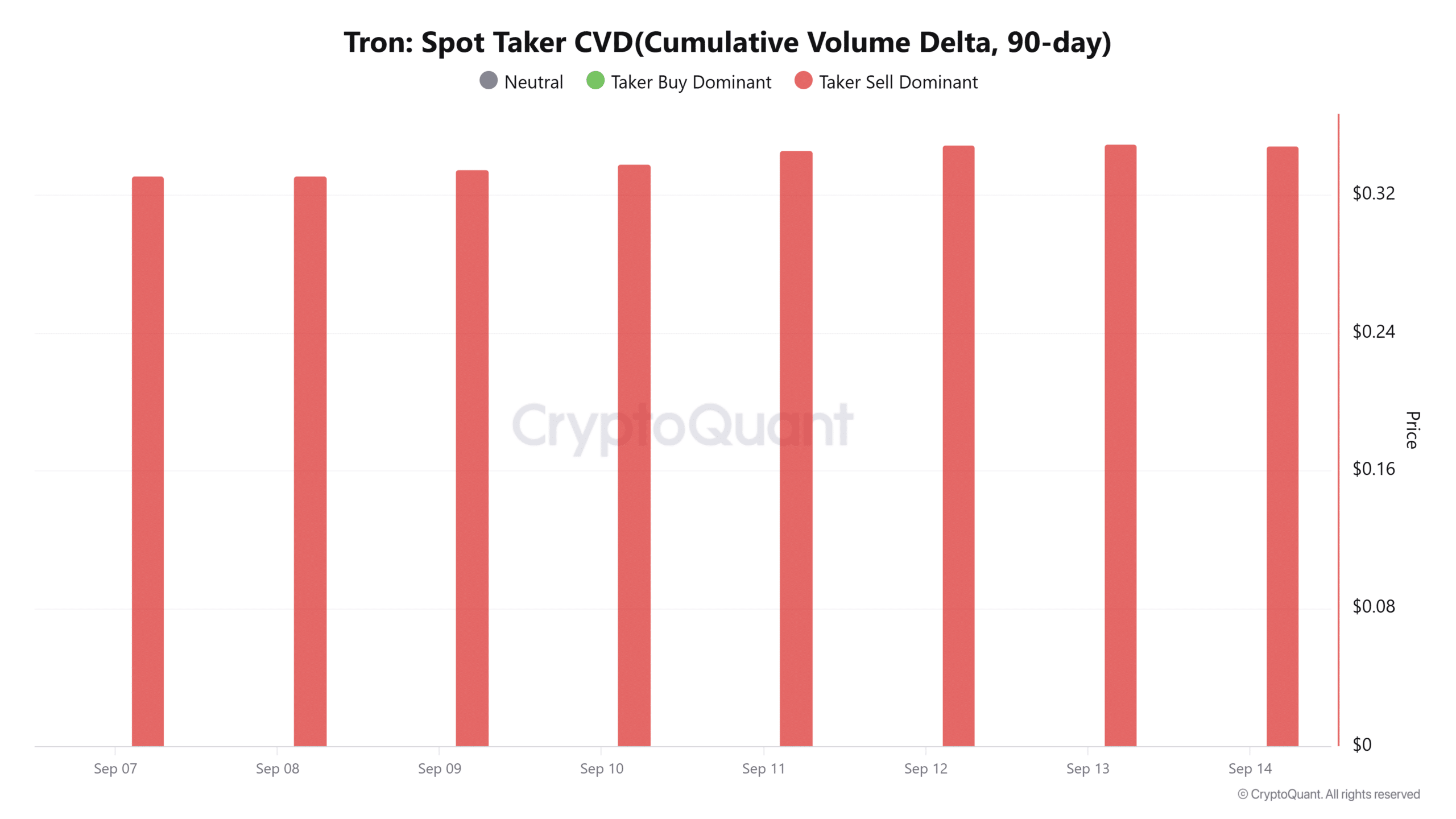
Source: CryptoQuant (data provider)
| COINOTAG recommends • Exchange signup |
| 🎯 Focus on process over noise |
| Plan trades, size positions, execute consistently. |
| 👉 Sign up → |
| COINOTAG recommends • Exchange signup |
| 🛠️ Simplify execution |
| Keep decisions clear with practical controls. |
| 👉 Get started → |
| COINOTAG recommends • Exchange signup |
| 📊 Make data your edge |
| Use depth and alerts to avoid guesswork. |
| 👉 Open account → |
| COINOTAG recommends • Exchange signup |
| 🧭 Be prepared, not reactive |
| Turn setups into rules before you trade. |
| 👉 Create account → |
| COINOTAG recommends • Exchange signup |
| ✍️ Plan first, then act |
| Entries, exits, and reviews that fit your routine. |
| 👉 Join now → |
| COINOTAG recommends • Exchange signup |
| 🧩 Consistency beats intensity |
| Small, repeatable steps win the long run. |
| 👉 Sign up → |
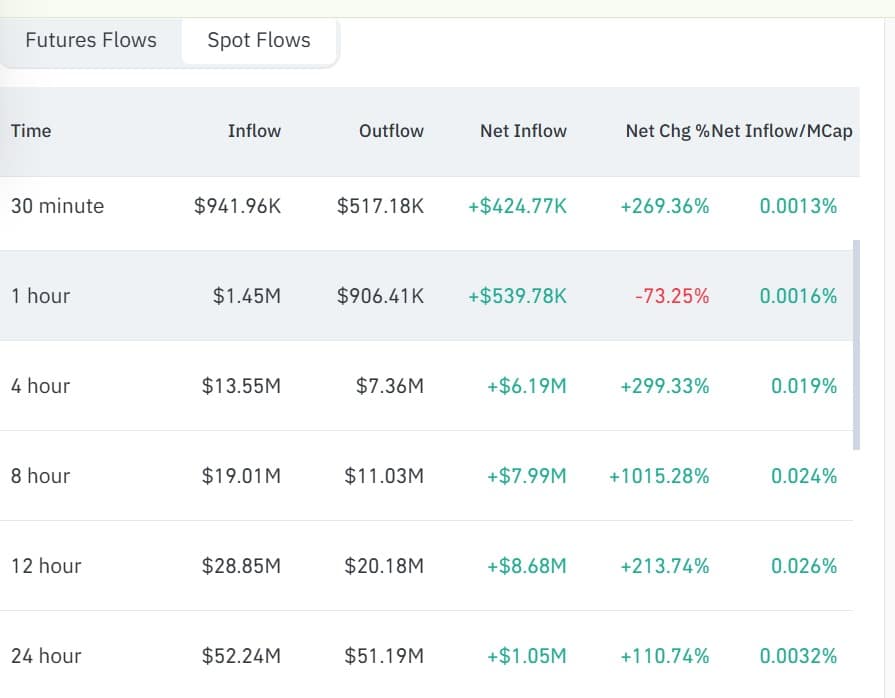
Source: CoinGlass (data provider)
| COINOTAG recommends • Premium trading community |
| 🏛️ WAGMI CAPITAL — Premium Trading Community |
| Strategic insights, exclusive opportunities, professional support. |
| 👉 Join WAGMI CAPITAL → |
| COINOTAG recommends • Premium trading community |
| 💬 Inner Circle access |
| See members share real‑time PnL and execution notes in chat. |
| 👉 Apply for Inner Circle → |
| COINOTAG recommends • Premium trading community |
| 🧩 Turn theses into trades |
| Reusable templates for entries, risk, and review—end to end. |
| 👉 Join the club → |
| COINOTAG recommends • Premium trading community |
| 💡 Long‑term mindset |
| Patience and discipline over noise; a process that compounds. |
| 👉 Get started → |
| COINOTAG recommends • Premium trading community |
| 📚 Education + execution |
| Courses, playbooks, and live market walkthroughs—learn by doing. |
| 👉 Get access → |
| COINOTAG recommends • Premium trading community |
| 🔒 Members‑only research drops |
| Curated analyses and private briefings—quality over quantity. |
| 👉 Join WAGMI CAPITAL → |
User activity: How significant is the USDT supply increase on TRON?
On‑chain monitors report USDT supply on TRON has climbed to about $23 billion in 2025, per Darkfrost data. Historically, larger stablecoin supply on a chain correlates with increased trading and DeFi activity, which can support native token demand.
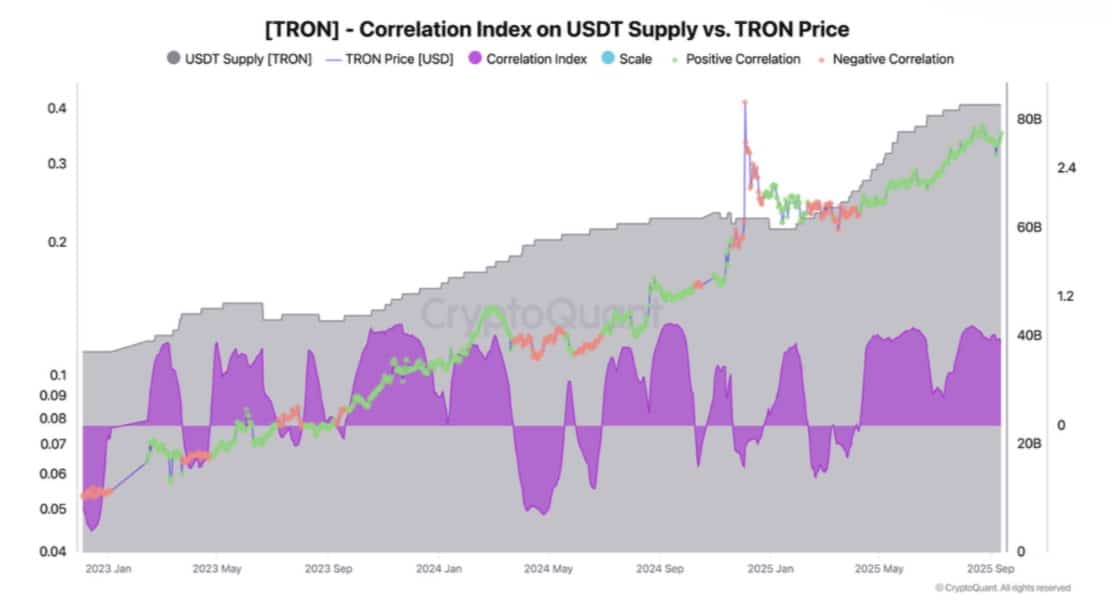
| COINOTAG recommends • Exchange signup |
| 🧱 Execute with discipline |
| Watchlists, alerts, and flexible order control. |
| 👉 Sign up → |
| COINOTAG recommends • Exchange signup |
| 🧩 Keep your strategy simple |
| Clear rules and repeatable steps. |
| 👉 Open account → |
| COINOTAG recommends • Exchange signup |
| 🧠 Stay objective |
| Let data—not emotion—drive actions. |
| 👉 Get started → |
| COINOTAG recommends • Exchange signup |
| ⏱️ Trade when it makes sense |
| Your plan sets the timing—not the feed. |
| 👉 Join now → |
| COINOTAG recommends • Exchange signup |
| 🌿 A calm plan for busy markets |
| Set size and stops first, then execute. |
| 👉 Create account → |
| COINOTAG recommends • Exchange signup |
| 🧱 Your framework. Your rules. |
| Design entries/exits that fit your routine. |
| 👉 Sign up → |
Source: Darkfrost (data provider)
Is a rally coming for TRX?
Combined signals point to conditional bullish potential. Strong Futures demand plus rising USDT liquidity on TRON increases the odds of a breakout for TRX toward near‑term resistance at $0.37.
However, spot seller dominance and persistent negative Spot Taker CVD could keep TRX rangebound. Key levels to watch: support near $0.344 and resistance around $0.37.
Key Takeaways
- Futures dominance: A 170% Netflow surge to $7.48M shows concentrated buyer activity in TRX futures.
- Spot pressure: Spot Taker CVD remained negative, indicating sellers have pressured the spot market recently.
- On‑chain liquidity: USDT supply on TRON at ~$23B signals increased network demand and liquidity for TRX trading.
Conclusion
TRON’s recent flows reveal a split market: strong futures buying and rising USDT liquidity support TRX upside, while spot selling poses short‑term risk. Monitor Futures Netflow, Spot Taker CVD, and USDT supply trends for confirmation; sustained buying could push TRX toward $0.37, while renewed spot selling would likely keep it rangebound.
Publication date: 2025-09-15 — Author: COINOTAG — Sources: CryptoQuant, CoinGlass, Darkfrost (data providers)
| COINOTAG recommends • Members‑only research |
| 📌 Curated setups, clearly explained |
| Entry, invalidation, targets, and R:R defined before execution. |
| 👉 Get access → |
| COINOTAG recommends • Members‑only research |
| 🧠 Data‑led decision making |
| Technical + flow + context synthesized into actionable plans. |
| 👉 Join now → |
| COINOTAG recommends • Members‑only research |
| 🧱 Consistency over hype |
| Repeatable rules, realistic expectations, and a calmer mindset. |
| 👉 Get access → |
| COINOTAG recommends • Members‑only research |
| 🕒 Patience is an edge |
| Wait for confirmation and manage risk with checklists. |
| 👉 Join now → |
| COINOTAG recommends • Members‑only research |
| 💼 Professional mentorship |
| Guidance from seasoned traders and structured feedback loops. |
| 👉 Get access → |
| COINOTAG recommends • Members‑only research |
| 🧮 Track • Review • Improve |
| Documented PnL tracking and post‑mortems to accelerate learning. |
| 👉 Join now → |





